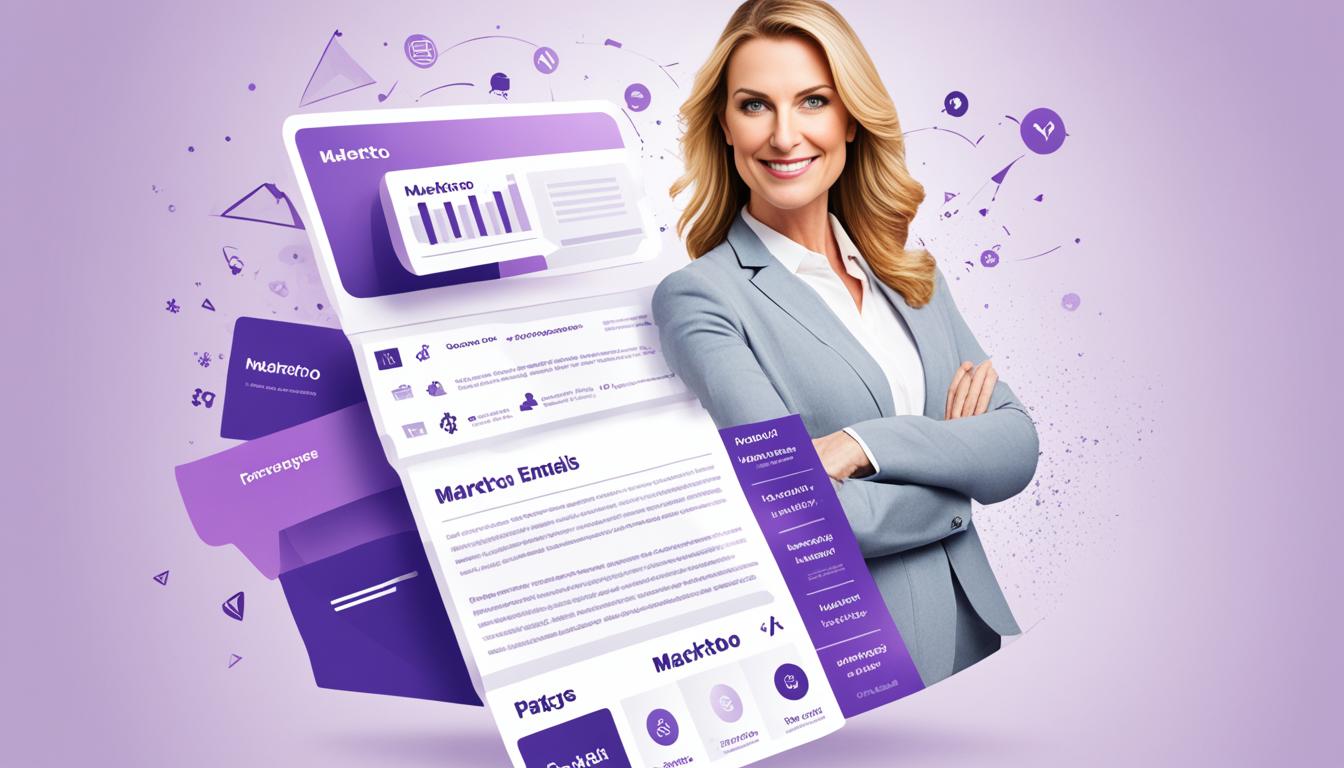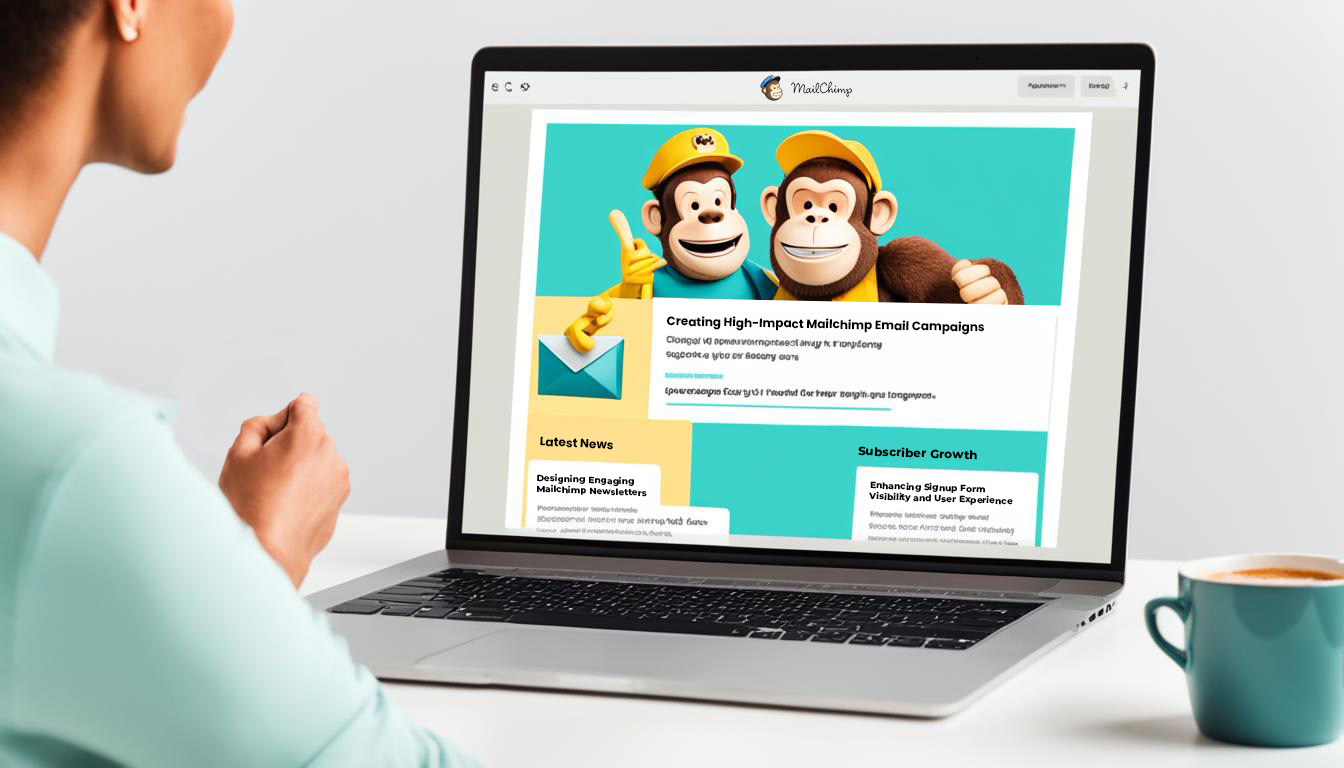Embarking on the journey of creating a digital presence can be a thrilling experience, especially with tools like WordPress at your disposal. Recognized for its user-friendly layout and comprehensive support system, WordPress stands as a beacon for those venturing into the realm of the internet. Whether you’re aiming to craft a personal blog, a robust business platform, or an engaging portfolio, mastering WordPress web design can be your ticket to online success. With robust WordPress development services and opportunities for custom WordPress development, a tailored, professional web presence is well within reach.
Key Takeaways:
- WordPress is renowned for empowering beginners with tools to establish an online presence with ease.
- The platform offers vast opportunities for customization, making custom WordPress development accessible.
- Comprehensive support and resources available make learning WordPress development services highly approachable.
- Choosing WordPress means joining a global community that continually drives innovation in web design.
- The process for creating a WordPress website is streamlined, thanks to extensive documentation and user guides.
- WordPress’s versatility supports a wide range of website types, catering to diverse online strategies and business goals.
Understanding the Basics of WordPress
Embarking on the journey to build a website can be daunting, but with the right tools and guidance, it becomes a fulfilling and creative process. WordPress stands out as a beacon for those seeking an accessible platform for their website creation needs. Historically, it has played a pivotal role in democratizing the process of web development, making it possible for anyone with a vision to establish an online presence. Here we will unravel the core components of WordPress and illustrate why it remains the preferred choice for countless website developers and designers.
What is WordPress?
At its core, WordPress is a Content Management System (CMS) designed with usability and flexibility at its forefront. The platform welcomes users with its intuitive interface, offering a seamless experience from initial installation to the daily management of content. A cornerstone of the best WordPress website design practices, it empowers users by simplifying the technical aspects of website creation.
Why Choose WordPress for Your Site?
Choosing WordPress as the foundation for your website is synonymous with embracing limitless possibilities. Small businesses, bloggers, and entrepreneurs are drawn to WordPress due to its open-source nature, a rich plethora of customization options, and a robust community lending reliable and widespread support. The versatility of WordPress allows for everything from simple blog layouts to complex e-commerce stores, each capable of being tailored to reflect the creator’s palate.
The Difference Between WordPress.com and WordPress.org
A common juncture in the WordPress website guide is distinguishing between WordPress.com and WordPress.org. The former offers a hosted platform, perfect for beginners looking for a quick start without the need for external hosting services. Conversely, WordPress.org invites you to the expansive world of self-hosting, where the user gains granular control over every aspect of their website design and hosting environment, bringing your bespoke online vision to life.
- WordPress.com: Easiest for beginners, offering ready-to-use solutions.
- WordPress.org: Ideal for those who crave full control and customization of their website’s design and functionality.
Through exploring the fundamental aspects of WordPress, your pathway to crafting the best WordPress website design is clear. With a keen understanding of its principles, WordPress becomes less of a tool and more of a trusted partner in your digital endeavors.
Choosing the Right Hosting for Your WordPress Site
When embarking on the journey of building a WordPress website, one of the initial and most critical steps is to select the right hosting service. This choice will have a profound impact on the performance and reliability of your site. Whether you’re an entrepreneur aiming to launch an online storefront or a blogger set on crafting a powerful digital presence, a solid hosting foundation is a must for ensuring your WordPress site builder efforts culminate in success.
Types of Hosting Services
Diversity is the hallmark of hosting services available for WordPress website setup. Choices range from the cost-efficient shared hosting, ideal for small to medium-sized projects, to more robust options like VPS (Virtual Private Server) and dedicated hosting, which offer greater control and dedicated resources. The cloud hosting alternative presents a flexible and scalable solution, allowing websites to handle varying traffic loads seamlessly. Your decision should align with the size, scope, and growth plan of your WordPress project.
What to Look for in a WordPress Host
Selecting the optimal host requires considering several key factors to ensure a smooth WordPress website setup. Prioritize a provider that boasts high uptime reliability and speed, which are pivotal for user experience and SEO ranking. Comprehensive customer support is also essential, as it ensures you receive timely help when needed. Furthermore, hosting services must offer WordPress compatibility to facilitate easy management and updates of your site.
Recommended WordPress Hosting Providers
Among the myriad of hosting services, a few have distinguished themselves as particularly suited for WordPress sites. Prominent providers like Bluehost, SiteGround, and WP Engine have been lauded for their WordPress-optimized hosting plans. These hosts provide a balance of affordability, performance, and support tailored specifically for WordPress site builder enthusiasts and professionals alike. Picking one of these reputable providers will set a strong foundation for your WordPress website’s future.
Registering Your Domain Name
Embarking on the journey of WordPress design and development, one of the most exciting and crucial steps is selecting and registering your domain name. Think of your domain name as your digital street address – it not only embodies your brand but also plays a pivotal role in search engine optimization and your online presence. To ensure a smooth start, remember that your domain name should be:
- Concise and memorable to leave a lasting impression.
- Relevant to your brand, making it instantly recognizable.
- Free of complex spellings to avoid user confusion.
Once you have brainstormed a domain name that aligns with your brand’s identity and mission, there are a plethora of avenues through which you can register it. Many opt for a two-in-one convenience by choosing a domain through their hosting provider. However, specialized domain registrars such as GoDaddy and Namecheap are also excellent choices that cater specifically to domain registration services.
Remember that your domain name is your brand’s first handshake with the world, make it count.
After making your choice, the registration process is just a few clicks away. It involves checking the availability of your desired domain and then proceeding with the registration, establishing you as the official owner of that digital real estate. As part of the registration, you will enter your contact information and choose the registration period – the typical minimum is one year, but longer options are available.
Finally, it’s important to recognize the role your domain name will play in WordPress development. A strategic domain name enhances your website’s discoverability and sets the tone for your site’s branding and marketing efforts.
In conclusion, while selecting the perfect domain name might require creativity and deliberation, the actual process of registering it is straightforward. With your domain name set, you’re ready to move forward in carving out your unique space on the web as part of the vibrant WordPress community.
Setting Up and Installing WordPress
Embarking on the journey of professional WordPress website building means you’ll first need to successfully set up and install WordPress. This stage ushers you into the world of online presence, where the ease of setup varies depending on the approach you choose. There are primarily two pathways to WordPress installation: the one-click method preferred for its simplicity and the manual method which offers more control.
One-Click Installations vs. Manual Installations
For those who seek convenience and speed, one-click installations provided by many hosting services are a blessing. However, if you’re someone who likes to get under the hood and understand the inner workings, manual installations offer that control, albeit with a steeper learning curve. Both methods will ultimately lead to the same result—an operational WordPress site—but the journey there will differ significantly.
Setting Up a Database for WordPress
Regardless of the installation method, WordPress requires a database to function. You’ll typically use a MySQL or MariaDB database to store all your site content. During the installation process, configuring the database settings is a critical step—this is where your site’s data will live and be managed effectively as your site grows and attracts more traffic.
Understanding the WordPress Dashboard
The WordPress dashboard is the command center for all your website activities. From here, you’ll manage themes, install plugins, and create content—essentially, the dashboard is your key to crafting and managing a dynamic and engaging site. Navigating through the dashboard with confidence is a pivotal step towards mastering professional WordPress website building.
Selecting a WordPress Theme for Your Site’s Design
The choice of a WordPress theme can significantly impact the aesthetic and functionality of your website. As part of comprehensive WordPress development services, selecting the right theme is critical for both user experience and branding. The WordPress ecosystem offers an array of themes, located in its extensive theme directory or available through various third-party developers.
For those looking to not only choose but also customize a theme, custom WordPress development expertise is beneficial. Themes like Astra, Avada, and Divi have climbed to the top of user preference lists, thanks to their versatility and user-friendly interfaces. These themes provide an excellent foundation, enabling users to craft a professional and responsive website with ease.
“Choosing the right theme is more than just about appearance; it’s about ensuring it aligns with both your branding and functional requirements.”
Here are some factors to consider when selecting a WordPress theme:
- Responsive design that adapts to different devices
- Compatibility with popular plugins and builders
- Regular updates and support from the theme developer
- Load speed and performance optimization
- Customization capabilities without compromising on simplicity
Themes are not just skins for your site; they provide a dynamic framework on which your site’s personality and usability hinge. With the guidance of professional WordPress development services, your choice of theme can harmoniously combine aesthetics with powerful features to create a seamless user experience.
WordPress Website Guide: Plugins and Customizations
Embarking on WordPress site creation brings you to a critical junction – enhancing your website with plugins and customizing it to reflect your unique brand. Whether you’re constructing a personal blog or a complex business site, the right set of tools and tweaks can dramatically simplify WordPress website setup.

Must-Have WordPress Plugins for Beginners
Plugins are to WordPress what apps are to smartphones – they add essential features and functionalities to your site. For novices, sifting through the multitude of available plugins need not be daunting. Start with the fundamentals:
- Yoast SEO: Simplifies the SEO process and helps you create better content.
- WooCommerce: Transforms your site into a fully-functional e-commerce store.
- WPForms: Allows you to easily create contact forms, email subscription forms, and more.
- Akismet: Protects your blog from spam comments.
- Wordfence Security: Bolsters your site’s security to prevent hacks and malware.
Customizing Your Theme and Layout
Fortifying the visual appeal of your website, themes offer an array of customization options. With no coding necessary, you can tweak your website’s aesthetic with a few clicks:
- Navigate to the customizer to adjust the colors, fonts, and layout.
- Personalize your headers and footers for a striking first impression.
- Use widgets creatively to add functionality and design elements.
Remember, consistency in design isn’t just about beauty—it’s about brand identity and user experience.
Improving Website Performance with WordPress Tools
A swift and smooth website invites higher user engagement and better SEO rankings. To enhance your WordPress website’s performance, consider implementing:
“Performance is not just an afterthought, it’s a prerequisite to a successful online presence.”
- Caching plugins like W3 Total Cache or WP Rocket to speed up your website.
- Image optimization services such as Smush or EWWW Image Optimizer to reduce load times.
- CDN integration with services like Cloudflare to distribute your content globally and decrease latency.
Incorporate these tools, and witness your website ascend to new heights of performance and user satisfaction.
Creating Content: Posts vs. Pages in WordPress
Understanding the fundamental differences between posts and pages within WordPress is crucial for professional WordPress website building and efficient content management. While both elements are central to WordPress design and development, they serve distinct roles on your website.
Posts: Dynamic, timely content that is often used for blogs, updates, and news articles, encouraging ongoing engagement through comments and social shares.
Posts are indexed by date and often grouped into categories or tagged for better organization – a feature that is instrumental in maintaining a robust, search engine optimized blog environment.
Pages: Static content intended for essential information that remains constant, such as ‘About Us’, ‘Contact’, ‘Services’, and ‘Privacy Policy’ pages.
Pages are used to create the backbone of a site’s navigation structure, providing visitors with information that typically does not change frequently. The clear structuring of pages ensures that visitors can easily find key information, reflecting the meticulous nature of WordPress design and development.
- Homepage: Often a static page that serves as the first impression for site visitors.
- About Page: Provides background information about the business or individual behind the website.
- Contact Page: Lists ways to reach the website owner or company, usually accompanied by a form.
- Legal Pages: Contains privacy policies and terms of service, which are crucial for transparency and compliance.
While both posts and pages are integral to building a professional presence online, their proper use can have a significant impact on the user experience and the site’s overall organization. A successful website must balance the dynamic content of posts with the foundational stability of pages.
As you embark on your journey of crafting a website that stands out, remember that the power of WordPress lies in its flexibility. Whether you’re engaging your audience with interactive posts or providing vital information through well-designed pages, mastering these elements is key to a polished and professional WordPress website building experience.
Optimizing Your WordPress Website for Search Engines
In the ever-evolving digital landscape, WordPress web design and its optimization for search engines are more important than ever. Not only does it enhance the user experience, but it also increases the visibility of your website in search engine results, a necessary step for online success. By implementing fundamental SEO strategies and best practices for your best WordPress website design, you ensure that your content reaches its intended audience effectively.
SEO Basics and Best Practices
The core of SEO hinges on a few crucial elements: keyword optimization, meta descriptions, and consistently producing high-quality content. Keywords, strategically placed within your content, guide search engines to your site. Meta descriptions, succinct summaries of your pages’ contents, also play a crucial role in click-through rates from search engine results pages (SERPs). Lastly, high-quality content not only keeps your visitors engaged but also positions your site as an authoritative source in your niche.
SEO-Friendly URL Structures
URLs are a fundamental element of on-page SEO. A well-crafted URL structure should be readable and straightforward, incorporating hyphens to separate words and including keywords to better signal page content to both users and search engines. This enhances your site’s usability and contributes to a boost in your SERPs standings.
Integrating Social Media
Social media integration has become a non-negotiable part of WordPress website design. This approach not only broadens your reach but also fosters community and drives traffic back to your website. By incorporating social sharing buttons and creating content that resonates with a social audience, you can tap into the vast potential of these platforms to magnify your SEO efforts.
Remember, SEO is a continuous process that requires consistent effort and monitoring. As you create and refine your WordPress website, these SEO strategies will be invaluable in carving out your digital presence and achieving your online goals.
Maintaining and Updating Your WordPress Site
Ensuring that your WordPress site remains an efficient, safe, and engaging platform requires a commitment to regular maintenance and vigilant updates. As a dedicated WordPress site builder, staying on top of these tasks not only preserves the integrity of your site but also enhances user experience and fortifies your online presence. Here are key aspects to focus on to keep your WordPress site in top-notch condition.
Regular Updates for Themes and Plugins
One of the cornerstones of WordPress development services is the frequent enhancement of themes and plugins. By updating your themes and plugins promptly, you benefit from:
- Improved site performance, featuring speed enhancements and smoother user interactions.
- Enhanced security, ensuring that vulnerabilities are addressed swiftly to protect against potential threats.
- New functionalities and features, keeping your site up-to-date with the latest innovations.
Remember, neglecting these updates could leave your site exposed to security risks and behind on technological advancements.
Security Best Practices
In a world where cyber threats are ever-evolving, following security best practices is non-negotiable. Key steps to take include:
- Securing your WordPress site with SSL certifications for encrypted data transfers.
- Implementing security plugins to monitor and safeguard your site against attacks.
- Enforcing strong passwords to prevent unauthorized access.
- Limiting login attempts to protect against brute force attacks.
By integrating these security measures, your WordPress website becomes a fortress, impregnable by common cyber threats. To learn more in depth about keeping your WordPress website safe, read WordPress Website Maintenance: Best Practices for Keeping Your Site Healthy and Up-to-Date
Backing up Your WordPress Website
A comprehensive backup strategy is your safety net against data loss. With services like UpdraftPlus, you can automate the backup process, ensuring that:
- Your content is safe and can be restored quickly in case of an emergency.
- You mitigate the risks associated with updates, as you can always revert to a previous version if something goes wrong.
- You have peace of mind knowing that your digital assets are preserved.
Whether you’re providing WordPress development services or managing your own site, the principles of diligent maintenance and strategic updating cannot be overstated.

Conclusion
Embarking on the journey of creating a WordPress website can be a fulfilling endeavor, especially when equipped with a solid foundation in WordPress website guide principles and the right strategies for custom WordPress development. This step-by-step guide illuminates the pathway for beginners, outlining essential steps—from selecting a hosting provider to optimizing for search engines. However, the key to success extends beyond initial set-up; it requires ongoing maintenance to adapt to the ever-changing landscape of digital needs and customer expectations.
Personalizing your site through custom WordPress development offers vast opportunities to differentiate your online presence and cater to your unique brand identity. Whether it’s refining the design, adding functionalities with plugins, or ensuring that your site structure meets the latest SEO criteria, each action you take propels your website towards achieving its full potential.
In summary, while launching your WordPress site may seem daunting at first, this guide supports you at each stage of the process. By adhering to the guidelines presented, you’re more than capable of establishing a professional and dynamic online presence, empowering you to grow your audience, enhance user engagement, and achieve your digital goals.
FAQ
What is WordPress?
WordPress is a highly popular content management system (CMS) used for creating and managing websites. It’s known for its user-friendly interface, flexibility, and extensive customization options.
Why should I choose WordPress for my website?
WordPress is an excellent choice due to its open-source nature, large support community, and vast array of themes and plugins that allow for high levels of customization and functionality.
What is the difference between WordPress.com and WordPress.org?
WordPress.com offers a hosted platform that takes care of hosting and managing the technical aspects of running a website, while WordPress.org is a self-hosted solution that provides users with more control and customization possibilities.
What are the different types of hosting services available for WordPress websites?
The primary types of hosting services include shared hosting, virtual private server (VPS) hosting, dedicated hosting, and cloud hosting, each catering to different website needs and traffic volumes.
How do I choose the right WordPress hosting provider?
Look for a hosting provider that offers excellent uptime, fast load times, strong customer support, and is optimized for WordPress, such as Bluehost, SiteGround, or WP Engine.
What should I consider when registering a domain name?
Choose a unique and memorable domain name that reflects your brand identity and is easy to spell and pronounce. It can be registered through hosting companies or domain registrars like GoDaddy or Namecheap.
What are the differences between one-click and manual WordPress installations?
One-click installations simplify the setup process by automating it through the hosting provider’s interface, while manual installations offer more control but require knowledge of creating and managing databases and files.
How do I set up a database for WordPress?
During the WordPress installation process, you will need to create a MySQL or MariaDB database through your hosting control panel, and then configure the database settings within the WordPress setup.
What are WordPress themes and how do I choose one?
WordPress themes determine the visual layout and design of your website. Choose a theme that aligns with your content strategy and offers responsive design, necessary features, and customization options. Themes like Astra, Avada, and Divi are popular for their flexibility and user-friendliness.
What are must-have WordPress plugins for beginners?
Essential WordPress plugins for beginners include Yoast SEO for search optimization, WooCommerce for e-commerce capabilities, and security plugins like Wordfence to protect your site.
How can I customize my WordPress theme and layout?
Most themes come with a range of customization options that you can access from the WordPress Customizer. Here, you can personalize layouts, color schemes, and typography without needing to write code.
What tools can help improve my WordPress website’s performance?
You can enhance your website’s performance using caching plugins like W3 Total Cache, image optimization tools like Smush, and CDN services to speed up content delivery.
What’s the difference between posts and pages in WordPress?
Posts are dynamic content entries used for blogs or news articles and are displayed reverse-chronologically, while pages host static content like ‘About Us’ or ‘Contact’ pages and do not have a date or time association.
How do I optimize my WordPress website for search engines?
Optimize your site by focusing on SEO basics such as proper keyword usage, quality content creation, and optimizing meta tags. Ensure you have SEO-friendly URL structures and integrate social media to augment your SEO efforts.
Why is it important to regularly update themes and plugins?
Regular updates to themes and plugins are crucial for security and performance as they often include patches for vulnerabilities, enhancements, and compatibility fixes.
What are some security best practices for WordPress sites?
Implementing SSL certificates, utilizing security plugins, creating strong passwords, and limiting login attempts are all effective ways to secure your WordPress website from common threats and hacks.
How can I back up my WordPress website?
Regular backups can be performed manually or with plugins like UpdraftPlus which automate the process, ensuring that you have a recent copy of your site to restore in case of data loss or corruption.



